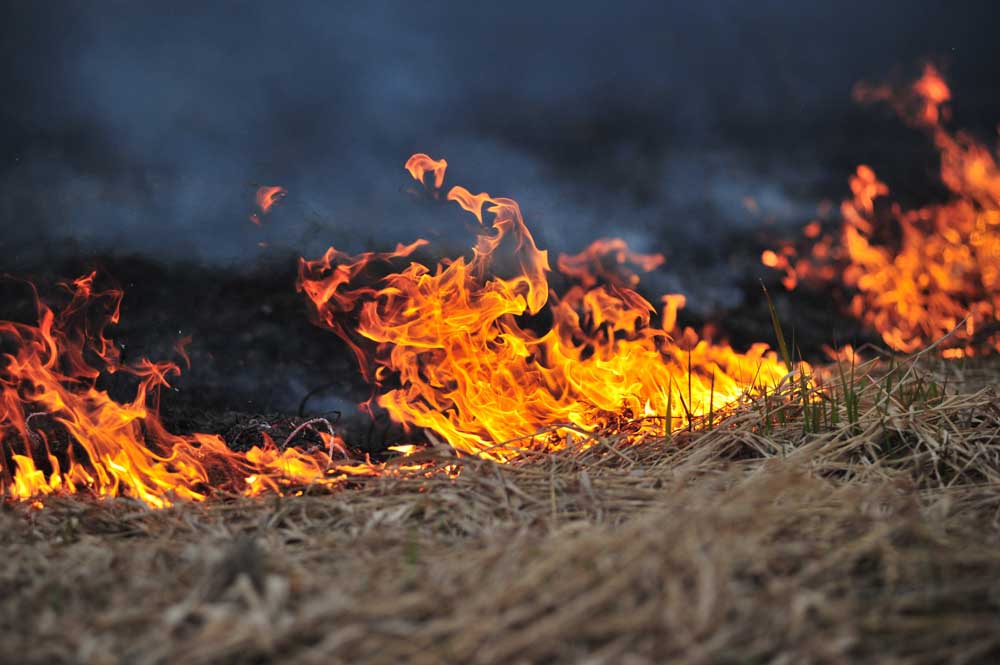Natural treasures abound at Glass Buttes
Published 9:24 pm Sunday, March 24, 2024
I told my dad, Mike, we were going hunting for rocks as we began making our way east on U.S. Highway 20.
“No. We’re hunting for glass,” he smirked from the passenger seat.
Trending
He wasn’t technically wrong though. Glass Buttes (https://www.fs.usda.gov/detail/deschutes/recreation/rocks-minerals/?cid=stelprdb5381935) weren’t named Rock or Stone or any synonym thereof, they were named for that silica-rich, volcanic glass, obsidian (https://volcano.oregonstate.edu/volcanic-minerals/obsidian), where it is found in abundance.
Driving that far east you would never guess this place is a trove for rockhounders searching for a plethora of these stunning, shiny and seriously sharp rocks in what otherwise looks like vast tracks of dirt, sagebrush and the occasional rimrock plateau. But turn off the highway, and it’s not long until you find out how these buttes got their name.
Roads of glass
The buttes and their subsequent rockhounding site, located about 75 miles east of Bend, aren’t necessarily hard to get to thanks to wide, dirt roads that lead right off the highway courtesy of the Bureau of Land Management which manages the area. The roads are unmaintained, however, and do get slick and sticky when wet leading to highly rutted or washed-out areas meaning that ground clearance and knowhow are helpful out in this place as well as 4×4 in some areas, but I did fine in my crossover Jeep (again, know what both you and your care are capable of).
Once you do find the turn-off off the south side of the highway it is a short drive before the dirt road changes and begins to gleam in the sunlight.
While most forest service or BLM roads have mix of traditional gravel, the roads up here are speckled with small chunks and slivers of obsidian that have been worn down by the cars zipping up and down for decades in search of the stunning stones out here. It’s a quick reminder to drivers to use caution up here as obsidian is extremely sharp and can easily puncture your tires.
Trending
The obsidian here is literally everywhere you look. You can fill a bucket’s worth in no time by just collecting the stuff found lying on the ground — no digging required. Of course, you can dig down if you so choose but do so responsibly.
In designated rockhounding sites throughout the state, you can collect up to 25 pounds of rocks a day with a yearly cap of 250 pounds and you cannot collect indigenous or historical artifacts or any vertebrate fossils you may find. If you do find an artifact (including skeletal remains) you must leave it be and report it to the BLM or Forest Service.
The BLM website and subsequent Rockhounding Guide (which can be purchased online and accessed via the Avenza app (https://store.avenza.com/products/central-oregon-rockhounding-map-us-forest-service-r6-pacific-northwest-region-waor-map) lay out the distinct areas where the various types of obsidian can be found at Glass Buttes.
Yes, that famously black stone does come in different varieties (https://rockseeker.com/different-types-of-obsidian/) and many of them can be found here from the classic onyx-colored rocks to rainbow, mahogany, gold and silver sheen, lace and snowflake varieties.
These different types occur when the lava encounters certain minerals, cools in a certain way or is chatoyant (https://www.gems-inclusions.com/inclusions-in-gemology/chatoyancy/) that bends light when it hits the surface of the obsidian.
Fire down below
Glass Buttes erupted about 4.9 million years ago when they spewed forth their mix of rhyolite, tuff and obsidian flows, the latter of which “congealed” before having the chance to flow further on land according to “Roadside Geology of Oregon,” hence why there is such an abundance of it here.
Beyond the obsidian strewn over the entire area, the buttes themselves contain interesting features too. From what appears to be standard, easy-sloping hills from the highway, once you drive into the collection area you can fully see and appreciate the volcanic past on display from the rocky outcroppings rising out of the buttes which themselves rise about 1,500 feet above the eastern Oregon landscape that surrounds them.
With minimal vegetation beside the odd juniper tree and seas of sage, these hills put on quite the display.
Rocky day out
My dad and I weren’t the only ones who made the trip to Glass Buttes that recent 70-degree Saturday, it seemed like every person with a remote interest in rockhounding made the trek out too. From couples armed with chisels and knapping tools to families bringing their kiddos out to hunt for those shiny rocks, the area was much busier than I had anticipated.
But it makes sense. With Glass Buttes so easy to reach thanks to the lonely stretch of Highway 20 that blazes right past them, to their abundance of obsidian which is incredibly easy to collect it’s no wonder that anyone with even a hint of that rock-collecting obsession would take the first opportunity to venture out here.
Once you do, you may just get fully bitten by that hounding bug.
Getting there: Travel east from Bend on U.S. Highway 20 toward Burns. Between mile markers 76 and 77 pull off onto an unmarked, unmaintained dirt road (there is a cattle guard at the entrance) and follow it to the collection areas located about two miles down the road. Do not take the turn-off with the chicken wire gate.








